At over 700 metres above sea level, the extraordinarily pretty white village of Comares in Malaga province, is the highest white village in the Axarquia
By Nick Nutter | Updated 29 Aug 2022 | Málaga | Villages |
Login to add to YOUR Favourites or Read Later
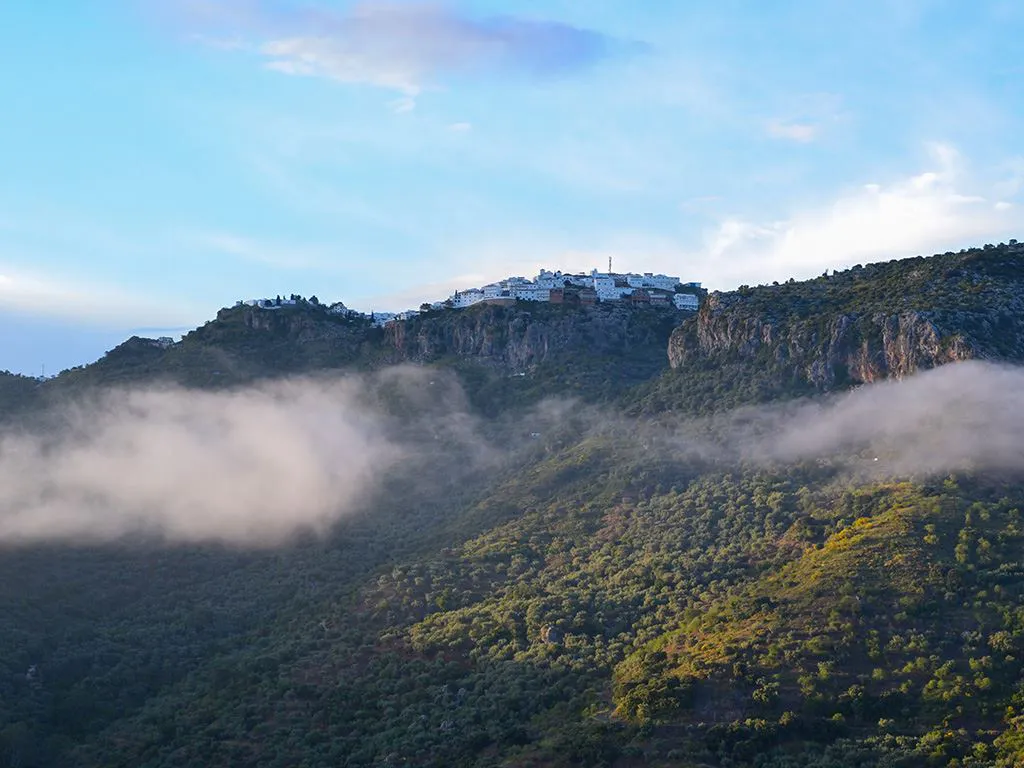
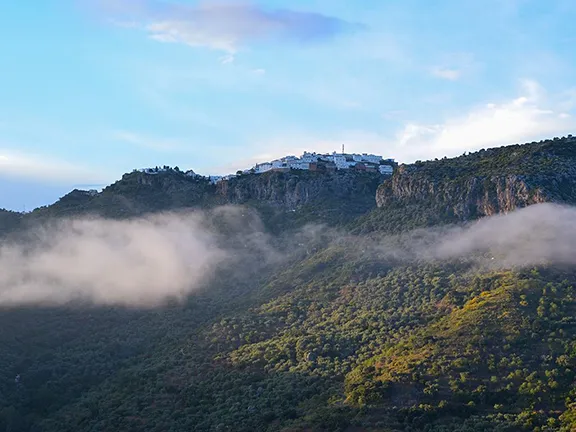
Comares from a distance
We were only supposed to be there for two days, a sudden decision to leave the coast, sweltering at somewhere near 35 C for the, hopefully, cooler airs of a mountain village, high in the Axarquia region of Málaga province. At over 700 metres above sea level, the extraordinarily pretty white village of Comares promised to provide relief.
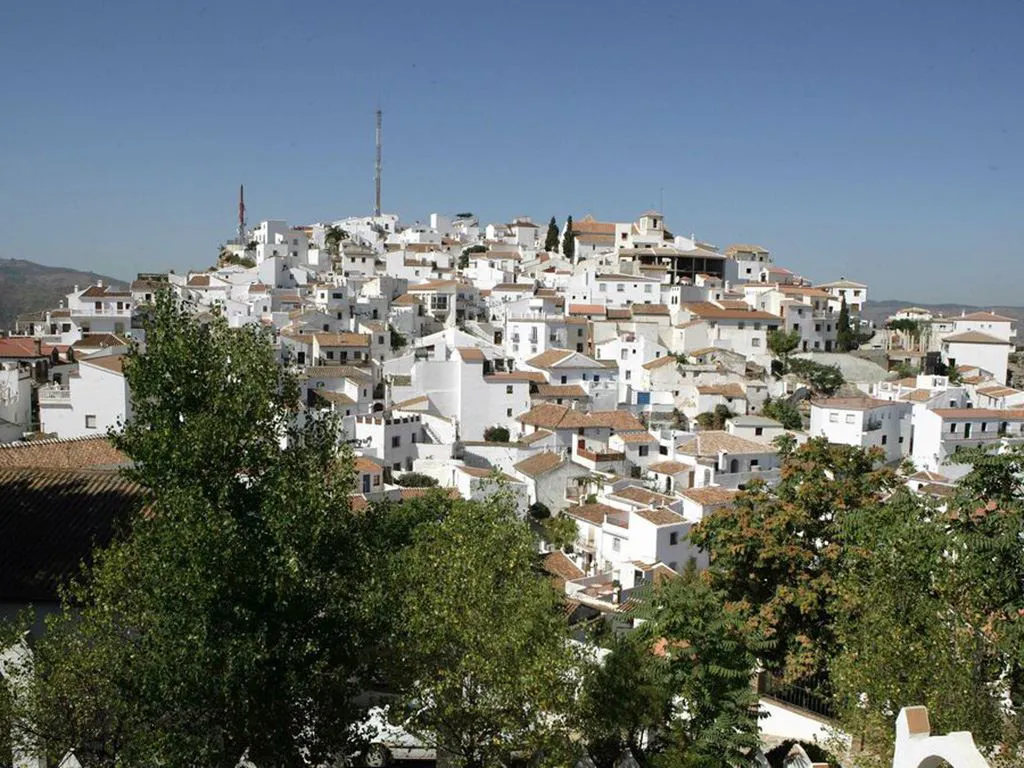
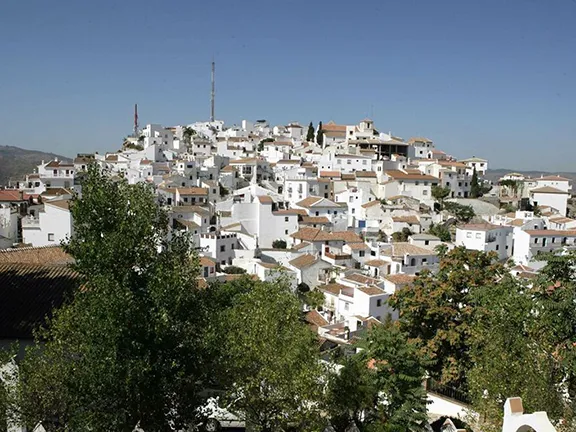
View over Comares
We did not know it at the time but Comares is the highest village in the Axarquia region. It is only about 30 minutes from the coast at Torre del Mar yet it is in a totally different world. As you drive from the coast, you are, within minutes, in the foothills of the Montes de Málaga and climbing quickly. The Mediterranean Sea is glimpsed behind between pine covered hills as the road twists and turns up the valley. At Triana, or thereabouts, you have your first view of Comares. Ahead and high above is a white village clinging to a spur of rock projecting from a ridge. On this day it appears to float ethereally on a fluffy white cloud that fills the valley below the village. The village plays hide and seek with tantalising sightings as the road hairpins up the mountain until, quite suddenly, you arrive.
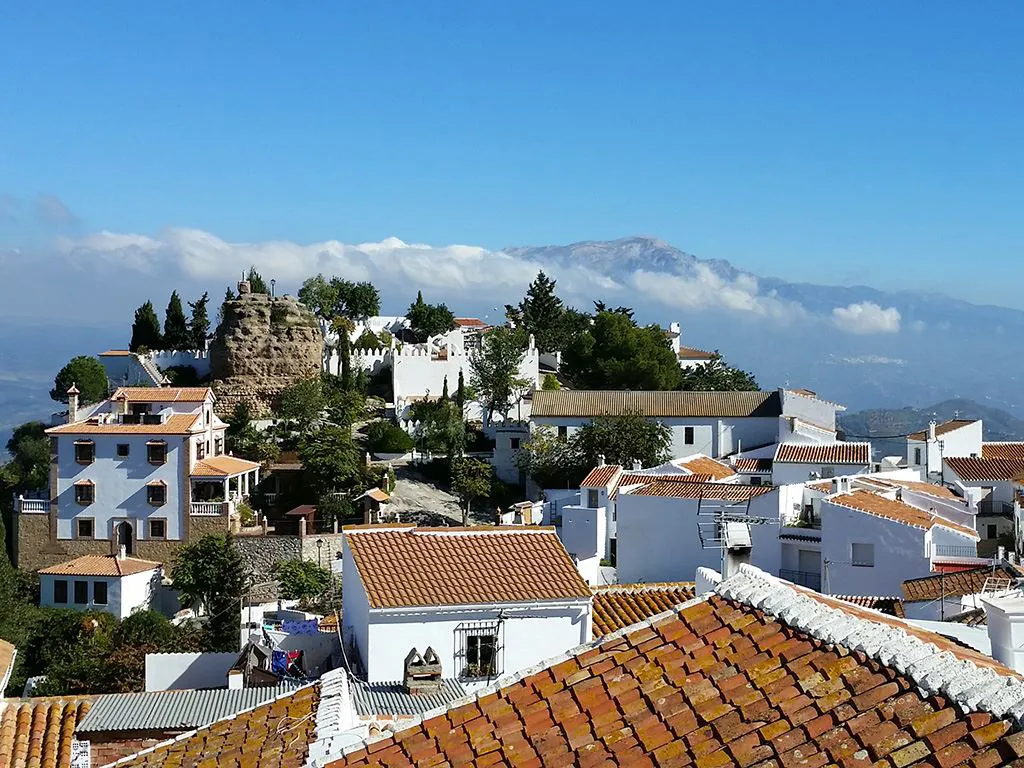
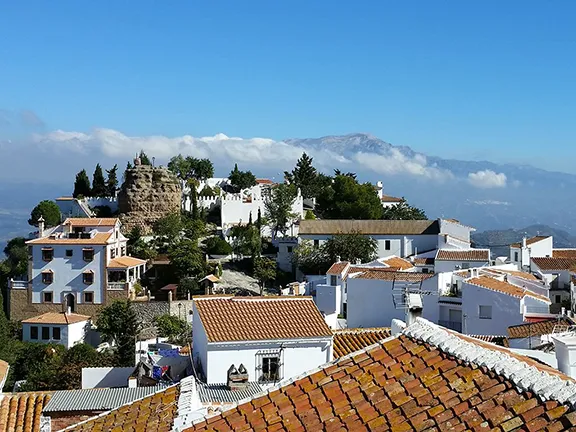
Comares from Plaza Balcon de la Axarquia
The hotel alongside the aptly named Plaza Balcon de la Axarquia, otherwise known as La Plaza, the main square, is a beautifully renovated olive mill, El Molino de los Abuelos. The precipitous views from its terrace and from many of the rooms are over the Velez valley that Comares dominates. The cloud is still there but above it the air is clear with an alpine blue sky.
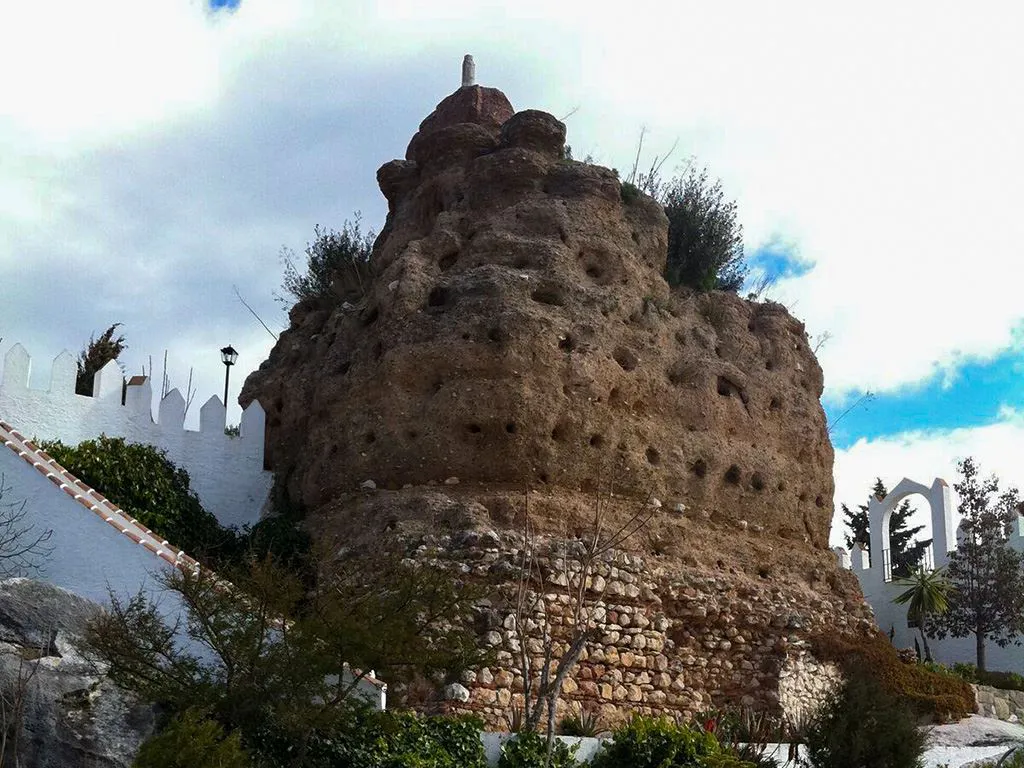
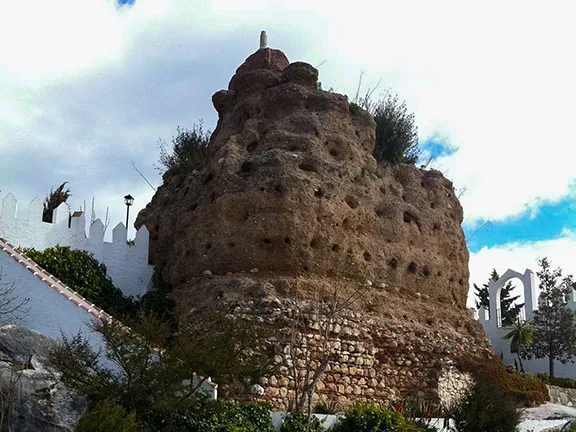
Castillo Tahona
Comares has a history going back to the Muslim period. It was referred to by the name of Hisn Qumarich, or Castle of Comares and it was one of the fortresses maintained in the Málaga mountains by the rebel Umar ibn Hafsun between 879 and 891 AD. The Torre la Tajona, part of the original castle wall, is the only remnant of what must have been a sizeable fortification. Beneath the torre, occupying the space that was once inside the castle, is the town’s, very neat, cemetery.
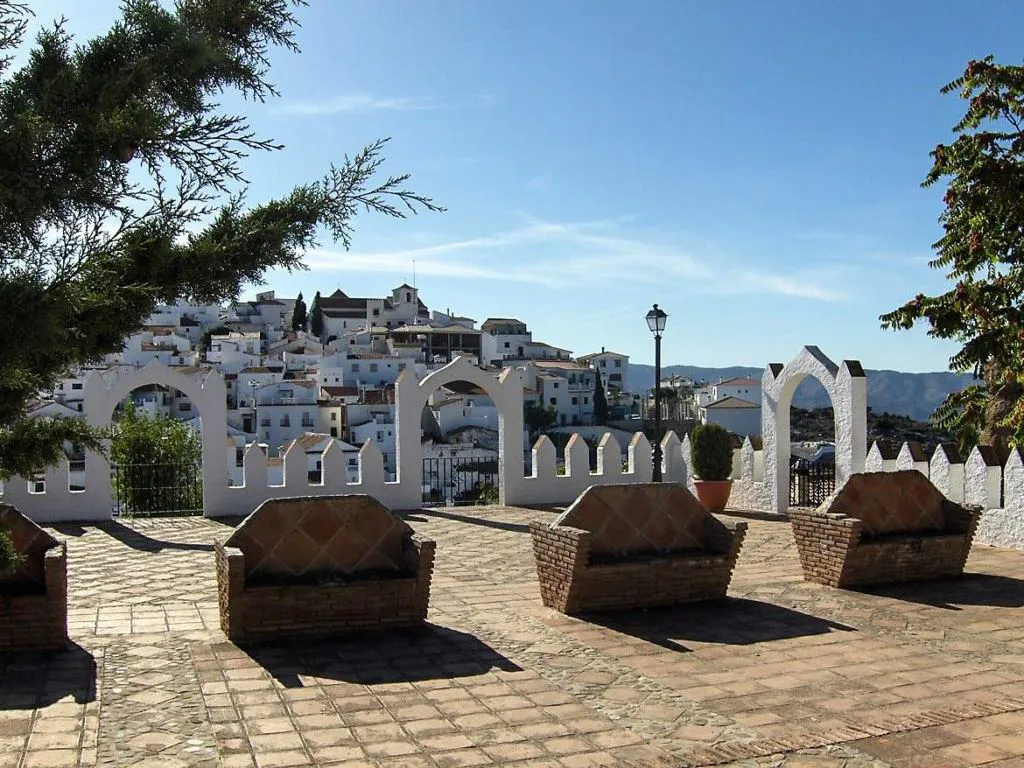
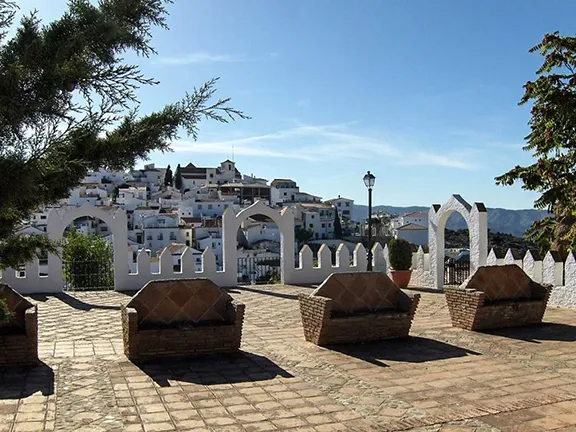
Comares
The narrow, winding streets that lead down from the castle are typical of the Muslim period. Whitewashed, one or two storey houses on either side of the laid cobbles. At least one of the arches that span the streets dates to the original 9th century village. Inset into the paving are blue ceramic tiles. These take you on a guided tour of the town, that takes about an hour, depending on how long you stay at what seems to be an obligatory stop, the Bar la Plaza back in the main square.
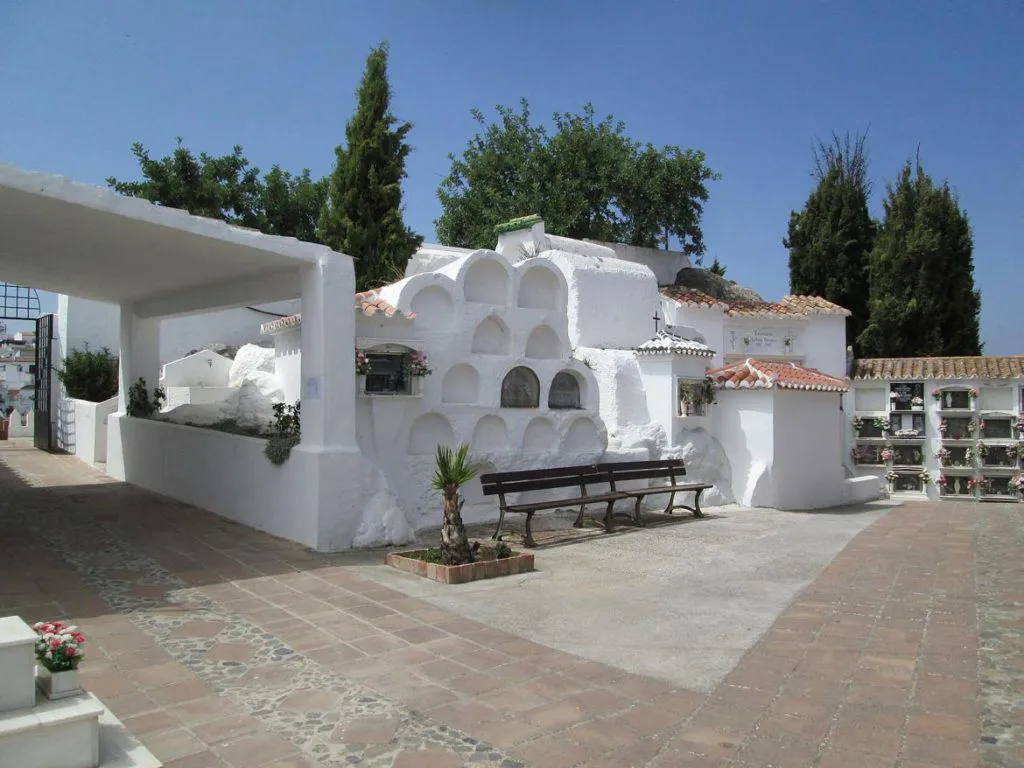
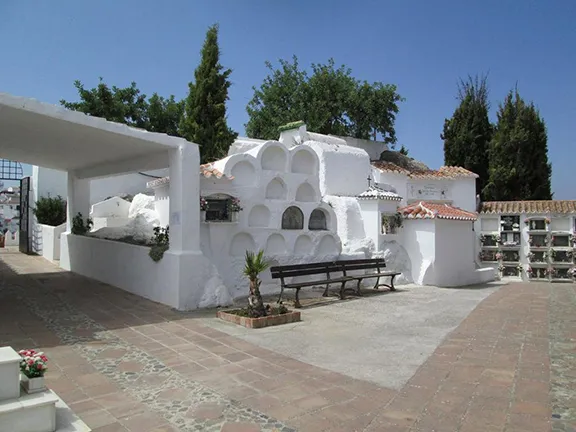
Comares cementerio
Comares was taken from the Muslims in April 1487 and the remaining Muslims were encouraged to convert to Christianity to become Moriscos. Most of the Muslims and converted Moriscos fled the village later that year, probably fearing the same fate as was meted out to the Muslims in Málaga following the Christian conquest of the city in August of that year. When Málaga finally fell after a three month siege, Ferdinand, king of Castile and Aragon, punished almost all the inhabitants for their stubborn resistance with slavery, while renegades were burned alive or pierced by reeds.
In 1490, Comares was repopulated with people brought in from Extremadura, Valencia, Galicia and Portugal. So it was that, in the Morisco uprisings of 1568 and 1569, Comares, having no Moriscos to revolt, was one of the few villages in the Axarquia region not to take part. Any remaining Mudéjars (Muslims that chose to keep their religion and live in Spain), were expelled by decree in 1570.
Since then, Comares has quietly continued its life, growing olives for oil, grapes for wine and almonds. The early 16th century church, Iglesia Nuestra Sñra de la Encarnacion, barely 100 metres from Plaza Balcon is still the focal point of the village.
To the north and west of the village is the reason why our stay became extended. The mountains. Grey-blue ridges paraded across the skyline, apparently within spitting distance. They proved to be an irresistible lure for us walkers. We discovered that Comares is an ideal spot from which to venture into the mountains. Great, what I call big, walks, walks with huge views and stunning ridges and returning to a quiet village for a few drinks, a decent meal and a comfortable hotel to lay ones head. What more could one ask?